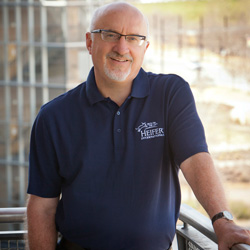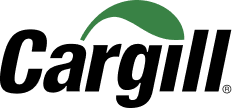Ending poverty, one chicken at a time
Heifer International CEO Pierre Ferrari on how the gift of livestock paired with tools and training can transform communities.
October 13, 2016
Cargill recently announced a partnership with Heifer International to enable the expansion of 450 women-led, family-owned poultry farms in the county of Qingshen in China’s southwestern Sichuan province. Heifer President and CEO Pierre Ferrari tells us more about the organization and its work with farmers around the world.
Heifer’s mission is to end hunger and poverty while caring for the earth. How do you go about doing that?
 Heifer International CEO Pierre Ferrari.
Heifer International has been working with farmers, helping others to help themselves for more than 70 years. Farming has always been the foundation for thriving civilizations and societies. It’s no different today. We believe that small farms are the key to feeding the world while cooling the planet. There are about 600 million smallholder farmers and herders who are responsible for about 70 percent of the global food supply. We work with small-scale farmers, many of them women, and their communities, providing them with tools, training and livestock to get them on the path to self-reliance and prosperity.
Heifer International CEO Pierre Ferrari.
Heifer International has been working with farmers, helping others to help themselves for more than 70 years. Farming has always been the foundation for thriving civilizations and societies. It’s no different today. We believe that small farms are the key to feeding the world while cooling the planet. There are about 600 million smallholder farmers and herders who are responsible for about 70 percent of the global food supply. We work with small-scale farmers, many of them women, and their communities, providing them with tools, training and livestock to get them on the path to self-reliance and prosperity.
How do you measure success?
Our goal is that by 2020, 4 million families will achieve a level of income that allows them to educate their children—including the girls; feed themselves adequately across every month of the year; and have proper housing, water, hygiene, and so on. All of these things will be primarily paid for with a reasonable amount of income, meaning a living income. Unless smallholder farmers can earn a living income, the global food market’s future is bleak.
Tell us more about the role that livestock play in your programs.
Livestock play a central role in our work, both as a strategy for alleviating poverty and achieving food security and proper nutrition. Livestock provide food and nutrition for people, while also giving them tangible assets with which they can improve their livelihoods. By combining the provision of livestock with training in animal husbandry, natural resource management, leadership skills and gender equity, we have created a development model that strengthens the social, economic and ecological fabric of a community.
How do Heifer programs reach beyond the individual families that you work with?
With the help of a researcher from the Clinton School of Public Service, we have studied 130 former project participants in Malawi and compared them to similar communities to determine the effects our work has on non-participant families. The data showed the spillover effect between Heifer and non-Heifer households is 1:5. So for every 1 household with which we worked, we had a statistically significant impact on another 5 households. These spillovers take the form of improved crop practices, new information on crop and/or livestock production, and access to community animal health services. The economic effects are significant as well: for every 1 percent change in the income of the Heifer households, we saw a .78 percent change in the income of the non-Heifer households within the network.
In all of your programs there is a “pay it forward” mentality, where beneficiaries are asked to pass on the gifts and knowledge they’ve received to others. Why is this so important?
Passing on the Gift is the hallmark of our approach. Initially, the concept mandated that each farming family who received an animal gift passed on the first female offspring to another in need. While that hand-off of livestock remains a fixture in most projects, the idea has blossomed and encompasses far more than our founders expected. Whether farmers are passing on animals or time and knowledge, the act transforms recipients into donors and produces a profound sense of accomplishment. Tangible gifts come with intangible benefits of opportunity, dignity and acceptance. This practice, at minimum, doubles the impact of the original gift, transforming a once impoverished family into full participants who improve and strengthen the bonds within their communities.
For more analysis from Pierre, follow @HeiferCEO on Twitter. To learn more about Heifer International, visit www.heifer.org.
